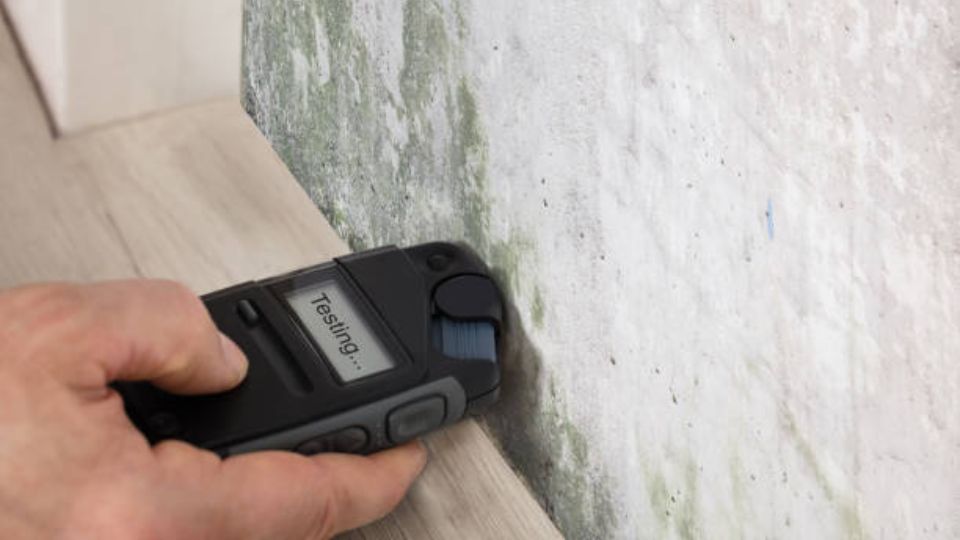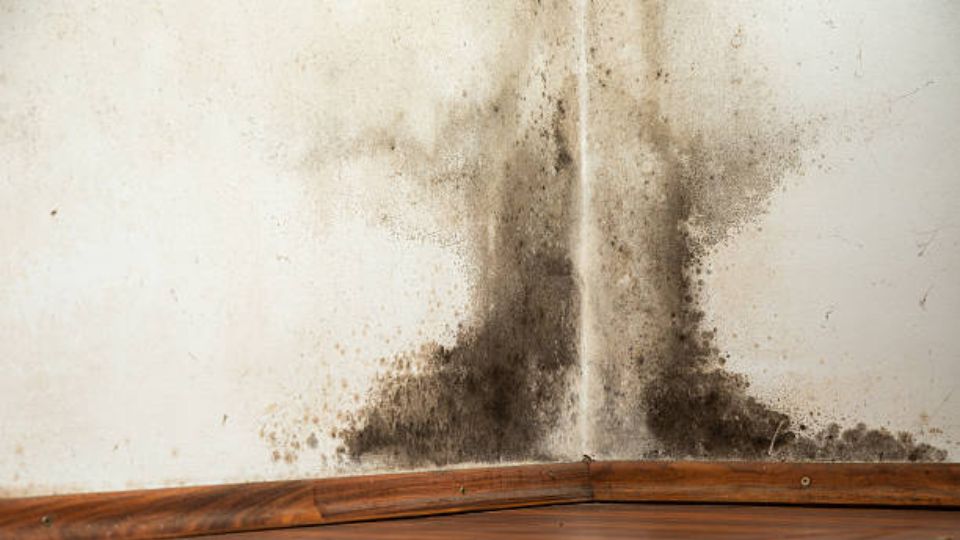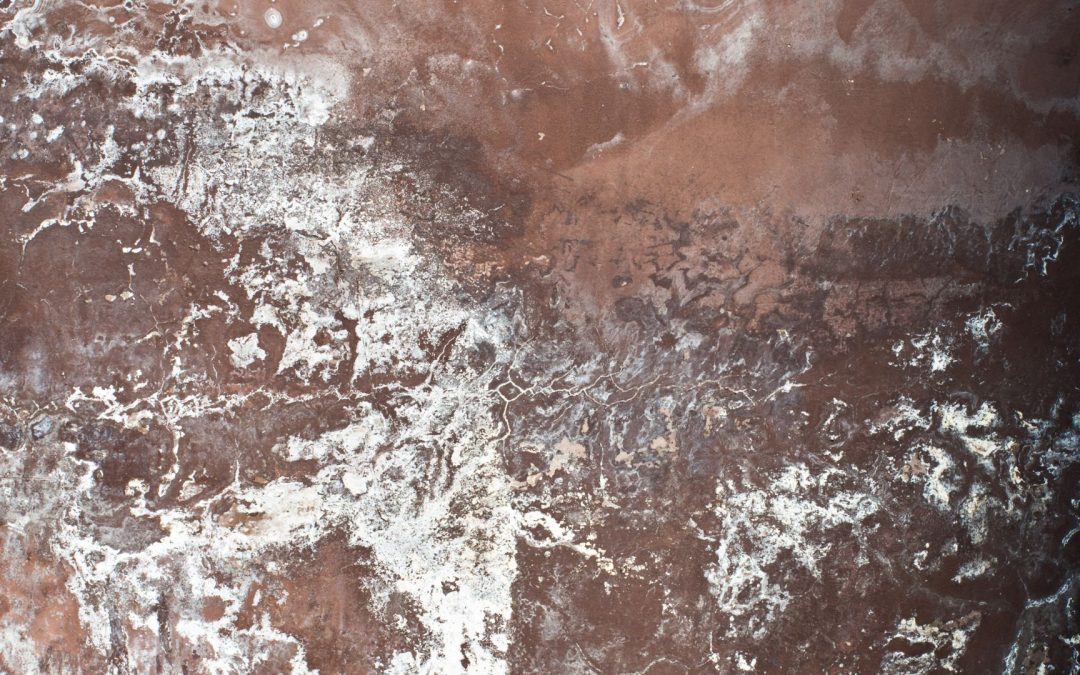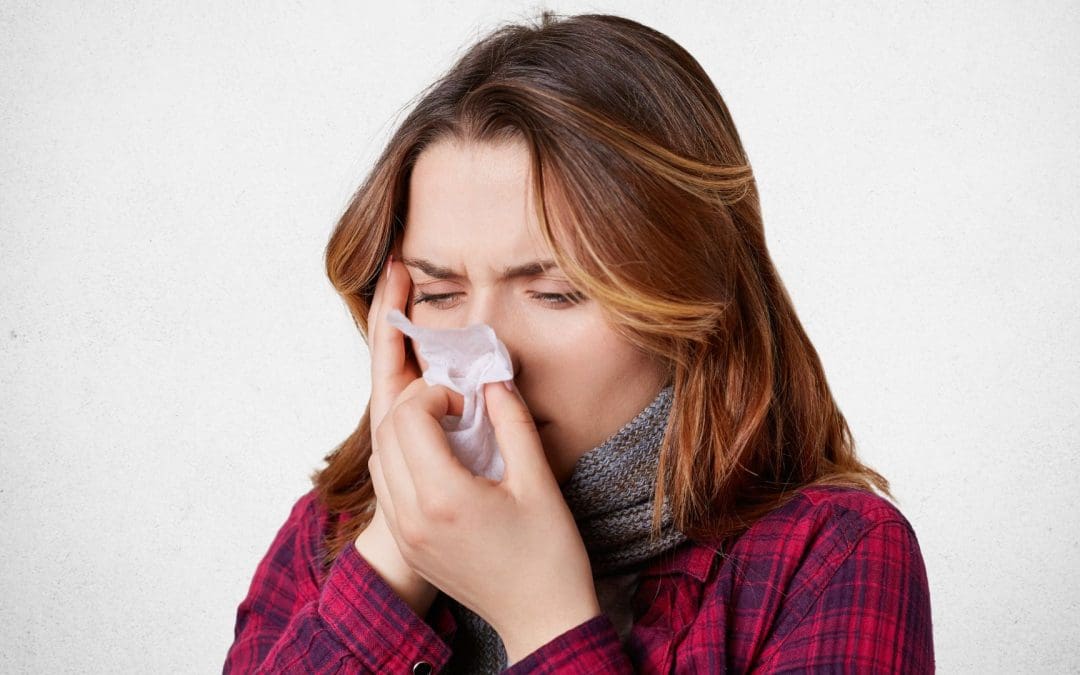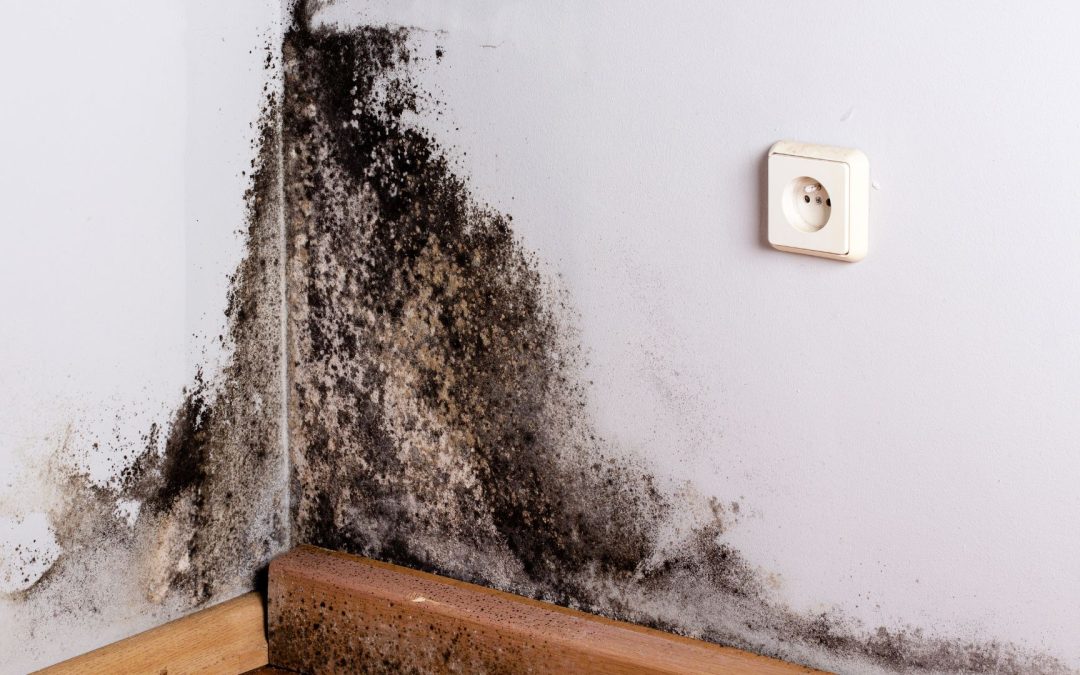
by Mold-B-Gone | Dec 6, 2022 | Mold Facts, Mold Inspection
Mold can be a severe issue in any home. Not only is it unsightly, but it can also cause health problems for you and your family. If you have mold in your home, it’s essential to test for it as soon as possible.
Some signs that indicate the presence of mold in your home include a musty smell, visible growth on walls and ceilings, and water damage.
Read more: How Do I Know If Mold Is Growing In My Basement?
There are several different ways to test for mold in your home. We will discuss how to test for mold and what to do if you have a problem with mold in your home.
1. Determine If You Have a Mold Problem
Mold growth happens when there is an excess of moisture in the air or on surfaces. A dripping roof, plumbing leaks, and condensation can lead to mold growth. Inspect your home’s walls, ceilings, windowsills, and floors for discoloration or any visible signs of mold. If you do see signs of it, or if your home smells musty, it is time to inspect further.
2. Collect Samples for Testing
Experts in mold testing use different methods to find and collect samples. These include:
a) Air Sampling:
This involves collecting a sample of air and sending it to the laboratory for testing. The air sampling procedure can be used in different house parts, such as near HVAC ducts or other areas where mold may be present.
b) Swab Sampling:
Swab samples are taken by rubbing a sterile swab on non-porous surfaces, such as walls or floors. The sample can then be sent to the laboratory for further testing.
c) Bulk Sampling:
This involves collecting a physical sample of the material that may be contaminated with mold and sending it to the laboratory for analysis.
3. Test the Samples for Mold
Testing mold samples requires specialized kits, or you can send the samples to a laboratory for analysis. Be sure to follow your chosen method’s instructions carefully and note any information unique to your particular situation.
4. Interpret the Test Results
Mold growth found in your home should be tested and identified to determine the best course of action for remediation. It’s important to understand that a professional mold inspector or testing company can help you interpret the results so you can make informed decisions on how to address the problem.
The test kits available at hardware stores include easy-to-follow instructions, but these tests need to assess the type or amount of mold growth accurately. For this, a professional lab will be necessary to provide a detailed report of what types of molds were found and the levels they were present.
5. Take Action Based on the Results
Mold remediation involves both the removal of existing mold growth and the prevention of future mold growth. If the test results show high mold levels, it is essential to take action quickly. Mold can cause health problems, such as allergies and asthma, so it should be removed immediately.
6. Maintain Your Mold-Free Environment
Preventive measures are the best way to keep your home free of mold. Take steps to reduce humidity in areas prone to moisture, such as bathrooms and kitchens, by using exhaust fans or dehumidifiers and ensuring that these areas are well-ventilated.
Call Mold-B-Gone for expert mold inspection in Atlanta. We are a certified mold remediation company with the experience, knowledge, and technology to diagnose and remove mold from your home or office accurately.

by Mold-B-Gone | Nov 15, 2022 | Black Mold, Mold and Infants, Mold Inspection
Mold can be a severe problem in homes and businesses. Not only is the mold unsightly, but it can cause health problems for people who breathe in the spores.
One of the dangerous types of mold is black mold. Also professionally known as Stachybotrys chartarum, black mold produces mycotoxins, which can cause serious health issues.
Black mold grows in damp, humid environments and can appear as greenish-black or black spots.
Read more: What Causes Black Mold?
It’s essential to understand how fast black mold grows on concrete and other surfaces so that you take the necessary steps to prevent it from taking hold in your home or business. Black mold usually starts growing in ideal conditions in 24 to 48 hours. We will also discuss health issues with black mold and factors that influence mold growth in your home or business.
What Are the Health Issues With Black Mold?
Black mold, known as Stachybotrys chartarum or Stachybotrys atra, is a fungus that can cause serious health issues if left untreated. These include:
- Respiratory problems, including coughing and sneezing, asthma attacks, and chronic sinus infections.
- Eye irritation, such as burning eyes or watery eyes.
- Skin problems, with redness and itching being the most common symptoms.
- Various neurological issues, such as headaches and fatigue.
- In extreme cases, black mold can cause nausea and vomiting.
Patients with weakened immune systems, as well as infants, children, and older adults, are especially vulnerable to its effects.
Factors That Affect How Fast Black Mold Grows
Mold only needs a few essential components to grow and thrive: moisture, warmth, food source, and oxygen. Here are the factors that can affect how quickly black mold grows:
Humidity:
Mold will grow faster in moist, humid environments. High relative humidity (RH) means more moisture is available for the mold to feed off, causing it to grow faster. Places like bathrooms and basements are typically more humid, making them ideal environments for mold growth.
Temperature:
Warm temperatures help black mold reproduce quickly. The warmer the environment, the faster it will grow. Locations with higher temperatures, such as attics, will experience faster mold growth than rooms with lower temperatures.
Food Source:
Different molds require different food sources to survive. Black mold grows on organic materials like wood and paper high in cellulose. To grow faster, it needs a consistent source of these materials.
Oxygen:
Mold needs oxygen to survive and reproduce. Without it, the mold won’t be able to grow. Black mold can also reproduce anaerobically (without oxygen) in small amounts, substantially slowing its growth.
What Should You Do While Waiting for Mold Remediation Services?
If you have noticed telltale signs of black mold in your homes, such as discoloration, musty smells, and even health issues, you may:
a) Seal off the area until a mold remediation service arrives
b) Contact your insurer and file a claim
c) Increase ventilation in the affected rooms to reduce moisture levels
d) Clean up any remaining water or spills and all porous materials (like carpeting and drywall).
Contact Mold-B-Gone for expert mold inspection in Atlanta. We have a team of certified professionals available to answer any questions about mold growth, particularly black mold.

by Mold-B-Gone | Nov 8, 2022 | Uncategorized, White Mold
Mold comes in many shapes and colors, but did you know that there is a type of mold that is white? White mold, also known as Aspergillus, is a type of fungus that can cause respiratory problems. Organisms such as mold and fungus can wreak havoc in your home if left unchecked.
People often confuse white mold with mildew, which is also a type of fungus. Although white mold and mildew may look alike, they affect the body differently. Mildew is more common in wet climates, while white mold prefers warmer temperatures and high humidity levels.
Read more: Mold vs. Fungus: Their Similarities and Differences
Here, we will discuss what white mold is, its health effects, and how you can safely remove it from your home.
What Is White Mold?
White mold is a fungus that can grow in areas with excessive moisture and humidity. White mold looks like a white, fuzzy material and often appears on organic materials such as wood, paper, insulation, drywall, wallpaper, or other cellulose-based materials. It may also appear in damp corners of rooms or around windows and doors.
What Are the Common Causes of White Mold?
White mold is a type of fungus which thrives in damp and humid environments. Common causes of white mold can include:
a) Leaky pipes, windows, or roofs:
When there is a leak in the home, it can allow moisture to accumulate in areas that may not usually be damp. This provides an ideal environment for white mold to thrive.
b) Insufficient ventilation:
Poor air circulation and ventilation can cause excess humidity and moisture in the home. This will create an environment that is favorable for white mold to grow.
c) Flooding:
When flooding occurs, it can create a perfect environment for white mold growth.
d) Improperly maintained HVAC systems:
If the insulation and filters of an HVAC system are not regularly checked and changed, they can become saturated with moisture, creating a perfect environment for white mold.
How To Identify White Mold?
White mold is identified by its color, usually white or grayish. It can also have a powdery or fuzzy texture. Other signs of white mold include unpleasant musty odors, water spots on walls and ceilings, discolored patches on walls and floors, and black spots on wood surfaces. Efflorescence, a white powdery substance found on basement walls, indicates white mold growth.
How Does White Mold Affect Your Health?
White mold can cause various health problems, from mild symptoms like hay fever and sneezing to more severe issues such as respiratory infections and skin problems. When exposed to the spores of white mold, some people may experience allergic reactions, including runny noses, watery eyes, coughing, wheezing, and difficulty breathing. Those with respiratory conditions, such as asthma, may be particularly vulnerable to the effects of white mold.
Long-term exposure can also lead to breathing problems and other illnesses. It is essential to take action as soon as you notice any signs of white mold in your home or office to prevent potential health risks.
White fluffy mold is dangerous and should be taken seriously. For expert mold removal in Atlanta, contact Mold-B-Gone Remediation Services. We have the experience and knowledge to resolve your mold concerns effectively.

by Mold-B-Gone | Oct 19, 2022 | Basement Mold, Mold and Infants, Mold Inspection
Mold can be a severe issue. It can cause health problems and damage to your property.
Basements are the perfect breeding ground for mold. The combination of darkness, moisture, and lack of ventilation creates the perfect environment for mold to grow.
Mold produces allergens that can cause respiratory problems, skin irritation, and other health issues. In some cases, mold can even produce toxins that can harm your health.
Hence, it is essential to call mold remediation for your basement as soon as you see any signs of mold.
Read more: Health Benefits of Mold Remediation
Experts will take care of the problem quickly and efficiently to ensure your home’s safety and integrity.
We will explain what causes mold, its health risks, and how our mold remediation services can help you get rid of it for good.
What Are the Causes of Mold Growth in Basements?
1) Poor ventilation – Moisture-laden air can condense on cold surfaces, leading to mold growth.
2) Water leaks – Leaks from pipes, foundation cracks, or other sources can introduce moisture into the basement, promoting mold growth.
3) Flooding – Basements are susceptible to flooding, leading to mold problems.
What Are the Health Effects of Mold?
1) Mold can cause nasal stuffiness, throat irritation, coughing, or wheezing.
2) People with asthma or who are allergic to mold may have more intense reactions.
3) Mold exposure can lead to inflammation of the airways and lungs.
4) Mold exposure is linked to neurological conditions and illnesses, including memory loss and depression.
How To Identify the Different Types of Mold?
1) Black Mold
These fungi are commonly found in bathrooms, kitchens, and basements. They thrive in places with high humidity or water leaks. They are also mildew and can cause many respiratory problems if inhaled.
2) White Mold
This type of mold is often found in food like bread, cheese, and fruits. It can cause nausea, vomiting, and diarrhea if ingested.
3) Toxic Mold
This is the most dangerous type of mold as it can release mycotoxins into the air, which can be inhaled and cause serious health problems.
How Do Experts Help With Mold Removal from Basements?
1. Identify the Location and Extent of Mold Growth
This will help determine the best way to remove the mold.
2. Contain the Mold
Containing will prevent it from spreading to other areas of your home. This can be done by establishing a physical barrier, such as using negative pressure to keep mold spores from traveling through the air or using natural barriers like plants.
3. Eliminate the Source of Moisture
Mold needs water to grow, so eliminating the source of moisture is essential to preventing it from returning. This can be done by fixing leaks, increasing ventilation, or using a dehumidifier.
4. Remove the Mold
Once the mold has been contained and the source of moisture eliminated, the mold can be removed. This can be done through cleaning, sanding, and HEPA vacuuming.
5. Clean the Affected Area
After removing the mold, the area should be cleaned with soap and water. Any porous materials that have been affected by mold should be thrown away.
If you are searching for a mold specialist in Atlanta, contact Mold B Gone. We will come to your home and inspect for mold. Our process is simple: we find the mold, we kill the mold, and we remove the mold. We also offer a warranty on all of our work.

by Mold-B-Gone | Oct 12, 2022 | Black Mold
Mold is found in many households in the U.S., and while it can be unsightly, it’s usually not a cause for alarm. It is a fungus commonly found in damp areas and can cause serious health problems if left unchecked. The primary difference between mold and fungus is that mold is green or black, while fungus can be any color.
Also, a fungus is composed of microscopic spores, while a mold is composed of filaments. The fungus typically grows on food or soil, while mold usually grows on damp surfaces.
Read more: Mold vs. Fungus: Their Similarities and Differences
Black mold can be black, green, or brown. It’s often found in damp areas, such as bathrooms, kitchens, and basements. If left unchecked, black mold can cause serious health problems.
Read on to learn about black mold and its dangers.
What Is Black Mold?
Black mold, known as Stachybotrys chartarum, is a mold that thrives in damp, dark environments. It’s often found in homes and buildings damaged by water or flooding. Black mold can cause serious health problems, including respiratory illness, neurological damage, and even death.
Signs of a Black Mold Infestation in Your Home
1) Visible Mold Growth
You can find black mold anywhere in your home where there is moisture, such as in damp basements, showers, or leaky pipes. The mold may appear as black specks, streaks, or blotches and can quickly spread if not removed.
2) Musty Odors
Black mold emits a gas called mycotoxin, which smells musty. If you notice this musty smell, it’s essential to investigate further to see if mold is present.
3) Respiratory Problems
When inhaled, black mold can cause several respiratory problems, including:
- Asthma
- Allergies
- Bronchitis
- Inflammation of the lungs
- In severe cases, black mold inhalation can even lead to death.
How To Prevent or Get Rid of Black Mold: Tips
1) Ventilation
Adequate ventilation is key to preventing the growth of mold. Be sure to ventilate any areas in your home prone to moisture, such as the kitchen and bathroom. Use exhaust fans or open windows to help circulate air and keep these areas dry.
2) Humidity
Mold thrives in humid environments, so it’s essential to keep the humidity level in your home low. Use a dehumidifier to help remove excess moisture from the air.
3) Water Damage
One of the most common ways mold enters the home is through water damage. If your home has experienced flooding or a leak, dry the area thoroughly and repair any damage to prevent mold from growing.
4) Cleaning
A good cleaning routine is essential for preventing the growth of mold. Be sure to clean any areas of your home prone to moisture, such as the kitchen and bathroom. Use a mild detergent and water to clean these areas
5) Mold-resistant products
Many products, like paints, caulk, sealants, etc., have mold-resistant features. You can use these products in areas more prone to moisture and susceptible to black mold growth.
While black mold may not be as toxic as other types of mold, it can still pose serious health risks. Exposure to black mold can cause several respiratory problems, including coughing, wheezing, and difficulty breathing.
You may wonder if cleaning or removing black mold is safe. It is better to call experts for mold removal in Atlanta, like Mold B Gone. We use the best EPA-registered products, and our approach is always efficient and effective.
